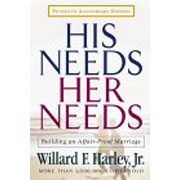Sue Bohlin calls for a spiritual and moral reflection on the topic of abortion, urging people to consider the eternal implications and affirming that God’s love, grace, and forgiveness extend even to those who have committed this sin.
![]() An earlier version of this article is also available in Spanish.
An earlier version of this article is also available in Spanish.
Abortion as Spiritual Warfare
Abortion continues to be a volatile issue, and an emotional one, in the United States. It is usually seen as a political issue, but I think it’s way bigger than that.
 I believe we need to see abortion as spiritual warfare.
I believe we need to see abortion as spiritual warfare.
We live in two dimensions at the same time: the physical world that we can see and touch and measure, and the unseen spiritual realm that is filled with God, angels and demons (2 Corinthians 4:17-18). Jesus revealed to us that Satan is the thief who “comes only to steal and kill and destroy” (John 10:10); abortion is one of the most wicked, heinous ways he inflicts pain and destruction on people God loves.
He steals joy and peace from women who have had abortions, as well as some of the fathers of the babies who were killed in the womb. He steals babies from what should be the safest place on earth. He steals motherhood from women and fatherhood from men. Through abortion, he steals grandchildren from grandparents.
Satan uses abortion to kill. Just in the United States, since Roe v. Wade made abortion legal, over 64 million babies have been murdered.{1} In China, the horrible one-child policy that terrorized the Chinese people for 35 years resulted in 350 million baby deaths.{2}
Satan uses abortion to destroy. Willingly choosing abortion for a pregnant teenager has been Satan’s foothold in many families that were torn apart, a phenomenon I have seen with my own eyes. Abortion—and its evil twin infanticide—destroyed the natural ratio of boys to girls in China. Today, there are 30 million young men who cannot find a girl to marry because there aren’t enough to go around.{3}
The rallying cry of abortion is, “It’s my body”—even though there is another human being’s body involved as well. Theologian Dr. Peter Kreeft’s insight is breathtaking to me: “Abortion is the Antichrist’s demonic parody of the Eucharist. That is why it uses the same holy words, ‘This is my body,’ with the blasphemously opposite meaning.”{4}
Abortion is an evil weapon in the hands of an unspeakably evil enemy. In Genesis 3, Satan declared war on the people God created and loves, and he has been warring with us ever since. The Lord Jesus triumphed over this defeated foe at the cross, but He allows battles to continue on this side of eternity to strengthen us and help us learn to depend on Him and grow stronger in our faith. In this article we’ll be talking about the spiritual battlefield of abortion, but please remember that not only does Jesus win in the end, He has provided us with spiritual armor that starts with TRUTH. Let’s go there now.
The Bible’s View of the Unborn
Pro-choice advocates don’t like the use of the word “murder.” Many of them maintain that no one really knows when human life begins, and they choose to believe that the idea of personhood at conception is a religious tenet and therefore not valid. But it is a human life that is formed at conception. The zygote contains 46 chromosomes, half contributed by each parent, in a unique configuration that has never existed before and never will again. It is not plant life or animal life, nor is it mere tissue like a tumor. From the moment of conception, the new life is genetically different from his or her mother, and is not a part of her body like her tonsils or appendix. This new human being is a separate individual living inside the mother. Rather like an astronaut being protected and kept alive in space.
The Bible doesn’t specifically address the subject of abortion, probably since it is covered in the commandment, “Thou shalt not murder.” (Exodus 20:13) But it does give us insight into God’s view of the unborn. In the Old Testament, the Hebrew word for the unborn (yeled) is the same word used for young children. The Hebrew language did not have or need a separate word for pre-born babies. All children were children regardless of whether they lived inside or outside the womb. In the New Testament, the same word is used to describe the unborn John the Baptist and the already-born baby Jesus. The process of birth just doesn’t make any difference concerning a baby’s worth or status in the Bible.
We are given some wonderful insights into God’s intimate involvement in the development and life of the pre-born infant in Psalm 139:13-16:
For you created my inmost being;
you knit me together in my mother’s womb.
I praise you because I am fearfully
and wonderfully made;
your works are wonderful, I know that full well.
My frame was not hidden from you
when I was made in the secret place.
When I was woven together in the depths of the earth,
your eyes saw my unformed body.
All the days ordained for me
were written in your book before one of them came to be.
All people, regardless of the circumstances of their conception, or whether they are healthy or handicapped, are God’s image bearers who have been personally knit together by His fingers. He has planned out all the days of the unborn child’s life before one of them has happened.
Chemical Abortion: “The Abortion Pill”
Chemical abortions now account for the majority of induced abortions in the U.S.{5}
Two drugs are used in tandem to end a pregnancy. The first pill, RU-46 or Mifepristone or Mifeprex (all the same drug), shuts down progesterone. That’s the pregnancy hormone that the developing embryo or fetus needs to survive and thrive. Progesterone allows the mother’s body to feed and nourish and oxygenate the baby. The first abortion pill blocks progesterone, so the baby dies. Then the next drug, Misoprostol or Cytotec, causes the uterus to contract and squeeze out the baby and other pregnancy tissue like the placenta.{6}
These drugs are very disruptive to the natural progress of growing a baby inside a womb. They are unfortunately quite effective up to seven weeks’ gestation, and then their effectiveness drops off. By the time the baby is ten weeks along, for one in six women the drugs won’t fully empty theuterus. Dangerous complications can set in, like:
- An infection caused by an incomplete or failed abortion where the fetus remains in the uterus
- An undetected ectopic pregnancy, which can be dangerous and is a medical emergency
- Blood clots remaining in the uterus
- Heavy bleeding
What is also scary is that chemical abortions are so easy to obtain they are like over-the-counter medications. No doctor is needed to supervise. If a woman has an ectopic pregnancy, where the embryo grows in her Fallopian tube instead of her uterus, she’s going to have awful pain and needs a sonogram to see where the baby is. Some of the deaths from Mifeprex abortions were from women that never had an ultrasound; they were given the drug and they had a pregnancy in their tube, and they died.
Thousands of women experience complications, called “adverse events” that require hospital intervention, but the FDA does not require adverse events to be reported unless someone dies. The abortion pill is being touted as being “safe as Tylenol,” which is a life-threatening lie.{7} But then, abortion is spiritual warfare, and the enemy constantly lies and deceives us.
But there is good news! Many times, even while swallowing the abortion pills and immediately afterwards, women wrestle with regret for starting the regimen. There is a protocol called Abortion Pill Reversal where a doctor prescribes a dose of progesterone, the pregnancy hormone, to counteract what the mifepristone did. If started quickly enough within 72 hours of a woman taking mifepristone and before she takes the second drug, there is about a 70% chance of saving her child!{8} Thank You Lord!
Handicapped Children
What if prenatal tests reveal that a baby is going to be born sick or handicapped? There’s no doubt about it, raising a handicapped child is painful and hard. Is it ever okay to abort a child whose life will be less than perfect?
We need to ask ourselves, does the child deserve to die because of his handicap or illness? Life is hard, both for the handicapped person and for her parents. But it is significant that no organization of parents of mentally retarded children has ever endorsed abortion.
Some people honestly believe that it’s better to abort a handicapped child than to let him experience the difficult life ahead. Dr. C. Everett Koop, former Surgeon General of the United States, has performed thousands of pediatric surgeries on handicapped children. He remarks that
disability and unhappiness do not necessarily go together. Some of the unhappiest children he has known had full mental and physical faculties, and some of the happiest youngsters have borne very difficult burdens.{9} Life is a lot harder for people with disabilities, but I can tell you personally that there is a precious side to it as well. I have lived most of my life with a physical handicap, but it hasn’t stopped me from experiencing a fierce joy from living life to the fullest of the abilities I do have. I can honestly rejoice in my broken body because it is that very brokenness and weakness that makes it easier for others to see the power and glory of my Lord in me, because His power is perfected in weakness.
Often, parents abort children with defects because they don’t want to face the certain suffering and pain that comes with caring for a handicapped individual. By aborting the child, they believe they are aborting the trouble. But as we discussed earlier, there is no way to avoid the consequences of abortion: the need to grieve, the guilt, the anger, the depression.
What if a baby is going to die anyway, such as those with fatal genetic birth disorders? I think we need to look at the larger picture, one that includes God and His purposes for our lives. When a tragedy like this occurs, we can know that it is only happening because He has a reason behind it. God’s will for us is not that we live easy lives, but that we be changed into the image of Jesus. He wants us to be holy, not comfortable. The pain of difficult circumstances is often His chosen method to grow godliness in us and in the lives of those touched by the tragedy of a child’s handicap. When it is a matter of life and death, as abortion is, it is not our place to avoid the pain.
My husband and I know what it is to bury a baby who only lived nine days. We saw God use this situation to draw people to Himself and to teach and strengthen and bless so many people beyond our immediate family. Despite the tremendous pain of that time, now that I have seen how God used it to glorify Himself, I would go through it again.
Not all abortions are performed as a matter of convenience. Some are performed in very hard cases, such as a handicapped child or as the result of rape or incest. But again, we need to back off and view abortion—for whatever reason—from an eternal perspective. God is the One who gives life, and only He has the right to take it away. Every person, born or unborn, is a precious soul made by God, in His image. Every life is an entrustment from God we need to celebrate and protect.
Post-Abortion Syndrome
Millions of women live with the emotional and physical aftershock of abortion. Although some do not seem to have been rocked by their choice, many many women live with deep guilt and shame and denial. Some live with the physical effects of the hormonal shock of suddenly ending the massive construction job of their body building another human being inside her womb. It’s something like throwing a car into park when it was going full speed down the road.
Post-abortion syndrome or stress disorder is real for many women. The grief is real; the deep loss of the child is real. And many people need help facing the pain and getting through it. I asked a dear friend about her experience. It’s been 48 years since her abortion. She wrote to me,
“Though the procedure was fairly easy, I knew the second it was over that I had done the wrong thing. I left that clinic empty, guilty, and depressed. It was the start of a lifetime of sadness and regret. I told no one other than my husband and kept that secret for over 30 years. I suffered in silence. I knew then that I had made the choice to end a human life.
“When I became pregnant later, the sadness and guilt actually multiplied. When I could feel the baby inside me, the intense feelings of shame and guilt consumed me for ending my first child’s life. When my daughter was born and I held her for the first time and looked into her eyes, as happy as I was to have her, I also felt the worst pain I had ever felt because of what I had done 7 years earlier.”
Ending another’s life, whether freely chosen or being pressured into it, is capital-T Trauma. The woman is shaped and changed by this trauma, and I am so grateful for abortion recovery programs. They help women (and men, though there are far fewer programs for Forgotten Fathers) to experience grace and compassion as they confess their sin and receive forgiveness and cleansing from Jesus, who died for their abortion.
Abortion is a hard choice for which there are hard consequences. But God’s love and compassion and grace are bigger than all of it, and there is such good news in Romans 8:28—God is able to make all things work together for good for those who love Him and are called according to His
purpose.
Notes
1. nrlc.org/communications/0123saus/
2. www.wired.com/story/china-one-child-policy-in-numbers/
3. youtu.be/u6tOe7naoEw?si=VGq2XzV8PDsWRfxs
4. www.churchpop.com/its-my-body-how-abortion-is-the-opposite-of-the-eucharist/
5. www.cnn.com/2024/03/18/health/abortion-data-guttmacher/index.html
6. www.biola.edu/blogs/think-biblically/2021/the-over-the-counter-abortion.
7. aaplog.org/wp-content/uploads/2023/08/20230728-Chem-Ab-One-Pager.pdf
8. aaplog.org/abortion-pill-reversal/
9. C. Everett Koop, “The Slide to Auschwitz,” in Ronald Reagan, Abortion and the Conscience of the Nation (Nashville: Thomas Nelson, 1984), 45-46.
©1992, updated 2024 Probe Ministries

 Grace-based families also have messages:
Grace-based families also have messages: Ultimately marriage is a picture of Christ and the Church—a picture both songs catch a small glimpse of. When Trainor in “Dear Future Husband” desires (albeit via demand) for her husband to show her love by serving her and affirming her, she desires something that is biblical. Husbands are called to nourish, cherish, honor, embrace, protect, and love their wives.
Ultimately marriage is a picture of Christ and the Church—a picture both songs catch a small glimpse of. When Trainor in “Dear Future Husband” desires (albeit via demand) for her husband to show her love by serving her and affirming her, she desires something that is biblical. Husbands are called to nourish, cherish, honor, embrace, protect, and love their wives. Yet our marriage is only a picture—a flawed and imperfect picture. Husbands abuse wives, wives undermine their husbands, and spouses cheat on each other which can all lead to separation and divorce. God did not intend marriage to be plagued by sin, and divorce and pain was not in his design.
Yet our marriage is only a picture—a flawed and imperfect picture. Husbands abuse wives, wives undermine their husbands, and spouses cheat on each other which can all lead to separation and divorce. God did not intend marriage to be plagued by sin, and divorce and pain was not in his design. How can a couple prevent adultery? Dr. Willard Harley in his book His Needs, Her Needs: Building an Affair-Proof Marriage provides some answers. He has found that marriages that fail to meet a spouse’s needs are more vulnerable to an extramarital affair. Often the failure of men and women to meet each other’s needs is due to a lack of knowledge rather than a selfish unwillingness to be considerate. Meeting these needs is critically important because in marriages that fail to meet needs, it is striking and alarming how consistently married people seek to satisfy their unmet needs through an extramarital affair. If any of a spouse’s five basic needs goes unmet, that spouse becomes vulnerable to the temptation of an affair.
How can a couple prevent adultery? Dr. Willard Harley in his book His Needs, Her Needs: Building an Affair-Proof Marriage provides some answers. He has found that marriages that fail to meet a spouse’s needs are more vulnerable to an extramarital affair. Often the failure of men and women to meet each other’s needs is due to a lack of knowledge rather than a selfish unwillingness to be considerate. Meeting these needs is critically important because in marriages that fail to meet needs, it is striking and alarming how consistently married people seek to satisfy their unmet needs through an extramarital affair. If any of a spouse’s five basic needs goes unmet, that spouse becomes vulnerable to the temptation of an affair.